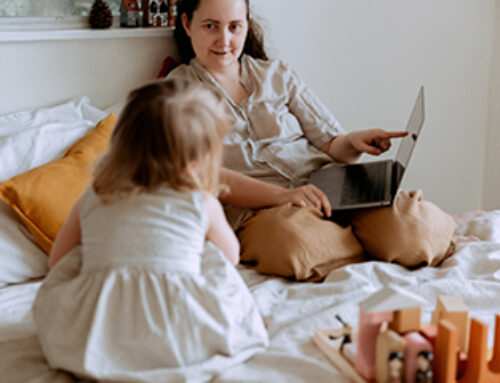Parents, try sitting at your kitchen table and lifting your feet completely off the ground. Keep your feet lifted and try eating something chewy or hard, such as a bagel or carrots. Notice how you feel. Are your core muscles engaged? Do you feel fatigued? Has your appetite changed? Could you eat with your feet lifted to eat for a full 20 minutes? Typically, when adults sit at bar stools without postural support, they are eating “bar food” like french fries or quesadillas because it does not take much oral motor work to consume.
This is how children feel when they are eating with their feet dangling. They have to use their core muscles to stabilize, which causes them to get easily fatigued and eat less food during the meal. The recommended seating position for a child is sitting with their hips, knees, and ankles all bent at 90 degrees. Adding a footrest will reduce fatigue at mealtime, improve attention, and decrease the risk of choking.
What should you do if your child’s chair did not come with a foot rest? Here are a few DIY ways to create a foot rest for your child:
- Cut a pool noodle and tape to the legs of the chair.
- Tie Theraband strips on the legs of the chair.
- Put an upside down plastic bin or laundry hamper under the chair.
- Grab a box of canned goods. Leave 1 can in each corner to weigh down the box and place it under the chair.
- Stack up old text books or phone books and tape to chair.
“Fixing the chair” is often the first step feeding therapists take to support a child who is having difficulty eating. Simply fixing your child’s chair to add postural support may help them try new foods, progress to harder textures, or remain seated during a meal for longer. Remember the 90-90-90 rule and consult with your child’s therapy team for other mealtime tips and tricks.

Blue Bird Day fosters socialization, sensory regulation, and pre-academic learning in children ages 2-7 years in therapeutic rotations that simulate preschool and kindergarten settings. Our compassionate therapists practice a relationship-based and family-centered approach, provide parent training, and collaborate on goals and individualized intensive treatment plans for your child.
We believe in a collaborative and multi-disciplinary team approach to therapy. A team of occupational therapists, speech-language pathologists, dietitians, developmental therapists, behavioral therapists, physical therapists, and therapeutic assistants are created for each child to ensure child and family are fully supported and the best possible results are achieved.
Options for individualized, group and virtual therapy sessions are available as well.
Want to learn more or you have a specific question? Feel free to connect with us here!



